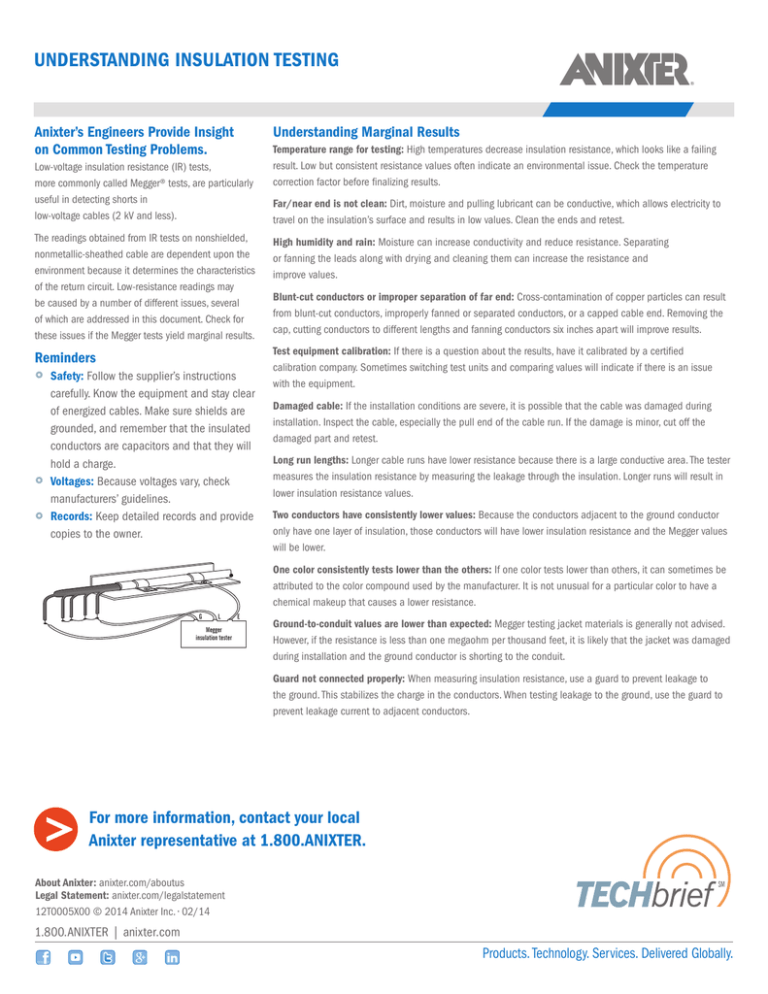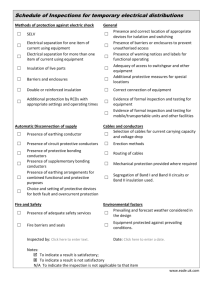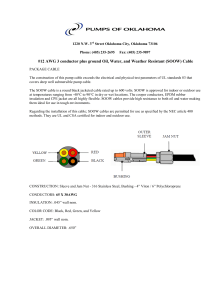Understanding Insulation Testing
advertisement

UNDERSTANDING INSULATION TESTING Anixter’s Engineers Provide Insight on Common Testing Problems. Understanding Marginal Results Low-voltage insulation resistance (IR) tests, more commonly called Megger® tests, are particularly useful in detecting shorts in low-voltage cables (2 kV and less). Temperature range for testing: High temperatures decrease insulation resistance, which looks like a failing result. Low but consistent resistance values often indicate an environmental issue. Check the temperature correction factor before finalizing results. Far/near end is not clean: Dirt, moisture and pulling lubricant can be conductive, which allows electricity to travel on the insulation’s surface and results in low values. Clean the ends and retest. The readings obtained from IR tests on nonshielded, nonmetallic-sheathed cable are dependent upon the environment because it determines the characteristics of the return circuit. Low-resistance readings may be caused by a number of different issues, several of which are addressed in this document. Check for these issues if the Megger tests yield marginal results. High humidity and rain: Moisture can increase conductivity and reduce resistance. Separating or fanning the leads along with drying and cleaning them can increase the resistance and improve values. Reminders Test equipment calibration: If there is a question about the results, have it calibrated by a certified calibration company. Sometimes switching test units and comparing values will indicate if there is an issue with the equipment. the supplier’s instructions ° Safety: carefully.Follow Know the equipment and stay clear of energized cables. Make sure shields are grounded, and remember that the insulated conductors are capacitors and that they will hold a charge. Voltages: Because voltages vary, check manufacturers’ guidelines. Records: Keep detailed records and provide copies to the owner. ° ° Blunt-cut conductors or improper separation of far end: Cross-contamination of copper particles can result from blunt-cut conductors, improperly fanned or separated conductors, or a capped cable end. Removing the cap, cutting conductors to different lengths and fanning conductors six inches apart will improve results. Damaged cable: If the installation conditions are severe, it is possible that the cable was damaged during installation. Inspect the cable, especially the pull end of the cable run. If the damage is minor, cut off the damaged part and retest. Long run lengths: Longer cable runs have lower resistance because there is a large conductive area. The tester measures the insulation resistance by measuring the leakage through the insulation. Longer runs will result in lower insulation resistance values. Two conductors have consistently lower values: Because the conductors adjacent to the ground conductor only have one layer of insulation, those conductors will have lower insulation resistance and the Megger values will be lower. One color consistently tests lower than the others: If one color tests lower than others, it can sometimes be attributed to the color compound used by the manufacturer. It is not unusual for a particular color to have a chemical makeup that causes a lower resistance. G L Megger insulation tester E Ground-to-conduit values are lower than expected: Megger testing jacket materials is generally not advised. However, if the resistance is less than one megaohm per thousand feet, it is likely that the jacket was damaged during installation and the ground conductor is shorting to the conduit. Guard not connected properly: When measuring insulation resistance, use a guard to prevent leakage to the ground. This stabilizes the charge in the conductors. When testing leakage to the ground, use the guard to prevent leakage current to adjacent conductors. For more information, contact your local Anixter representative at 1.800.ANIXTER. About Anixter: anixter.com/aboutus Legal Statement: anixter.com/legalstatement 12T0005X00 © 2014 Anixter Inc. • 02/14 1.800.ANIXTER | anixter.com Products. Technology. Services. Delivered Globally.




